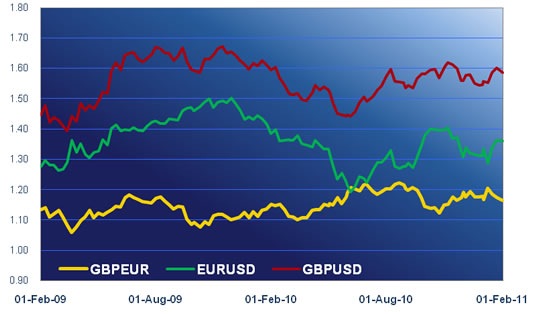– Because rates are going up
– But when?
Good morning. On another planet, the Spanish housing minister is appealing to Britons to help her out by buying up the houses and apartments which remain unsold as a result of the financial crisis. She makes the perfectly sensible point that that there are some real bargains to be had: prices are down by anything up to 40% compared with their pre-recession levels and properties built without planning permission can be picked up even more cheaply. But bargains or not, Señora Corredor is missing the point; where will all these Brits get the money? Spanish mortgage approvals are running at about the same pace as in the UK. The latest figures showed 44,200 approvals in November. At that rate it will take nearly 23 years to clear the backlog of a million unsold properties.
|
|||||||||||||
| Economic releases | |||||||||||||
|
|||||||||||||
By then, interest rates in Euroland and Britain are likely to be appreciably higher than they are today and there is a growing feeling that it could be sterling interest rates that lead the way. The Independent’s economics editor speculates this morning that the first increase could come as soon as this week. Two members of the Monetary Policy Committee have already come out as interest rate hawks: if they can persuade three of their colleagues to join them we will be looking at a 0.75% Bank Rate on Thursday. For the two thirds of us with floating rate mortgages that means paying an extra £30 a month interest. (For those with outstanding credit card balances the increase will be an irrelevance; the average interest rate on cards is already 18.9%.)
A rate hike in the next few months is working in sterling’s favour. Recent economic data have done nothing to detract from that positive view. Last week’s purchasing managers’ indices were good. The latest Halifax house price index went up by a monthly 0.8%. A survey by accountancy firm BDO saw retail sales up by 9.1% in January and tonight’s figures from the British Retail Consortium should be upbeat as well. It all made for a happy end to the week for sterling. It lost ground to the Canadian dollar after a strong 69.2k increase in Canadian payrolls but elsewhere the pound is higher or at worst steady. The Canadian dollar would have done better had it not been for a weak showing by the Ivey purchasing managers’ index later in the day. It slumped from a neutral 50.0 to a decidedly un-positive 41.4 in January, costing the Loonie three quarters of the two cents it had earned from the employment figures.
Friday’s other employment figure produced some odd results. Investors had been geared up for a January increase of around 140k in US non-farm payrolls after a disappointing 103k rise the previous month. What they got was a 36k increase, together with an 18k upgrade to December’s score. Even adding them together the 54k total did not scratch the surface of what the market had been expecting. Yet the dollar went up; not far and not for very long but it did strengthen after the announcement. Some attributed the rally to sympathetic investors who thought the only reason for the low number was bad weather during the month. More likely, people were looking at the headline rate of unemployment; it dropped from 9.4% to 9.0% in one fell swoop. Whether it is sensible to focus so closely on the unemployment rate is a different matter. The opposite of unemployment is not necessarily employment. As the Bureau of Labor Statistics put it; “The number of unemployed persons decreased by about 600,000 in January to 13.9 million.” The other 564,000 dropped off the radar. “…1.8 million persons marginally attached to the labor force had not searched for work in the 4 weeks preceding the survey.”
Figures released overnight showed weakness in the Australian construction and retail sectors. AiG’s performance of construction index dropped to 40.2 from an already soft 43.8. Retail sales rose by 0.2% in December, a disappointment compared with the expected 0.5% increase. Japan’s coincident and leading indicators both went higher in December but the news did nothing to the yen. The thin pickings today include nothing more than Euroland investor confidence, German factory orders and Canadian building permits. Tonight brings US consumer credit, Japan’s trade surplus, the RICS house price balance and that BRC retail sales figure.
Figures like that are not likely to get the major currencies moving so, for something a little different, how about having a look at the Egyptian pound. After more than a week in limbo the EGP has re-emerged at a rate of 5.8681 to US$1 on the central bank’s website and a six-year low of 5.9325 in the open market. That number is likely to get bigger as time goes by.






